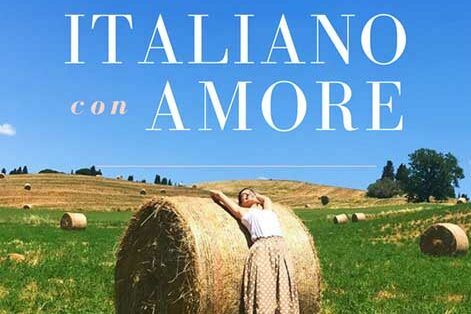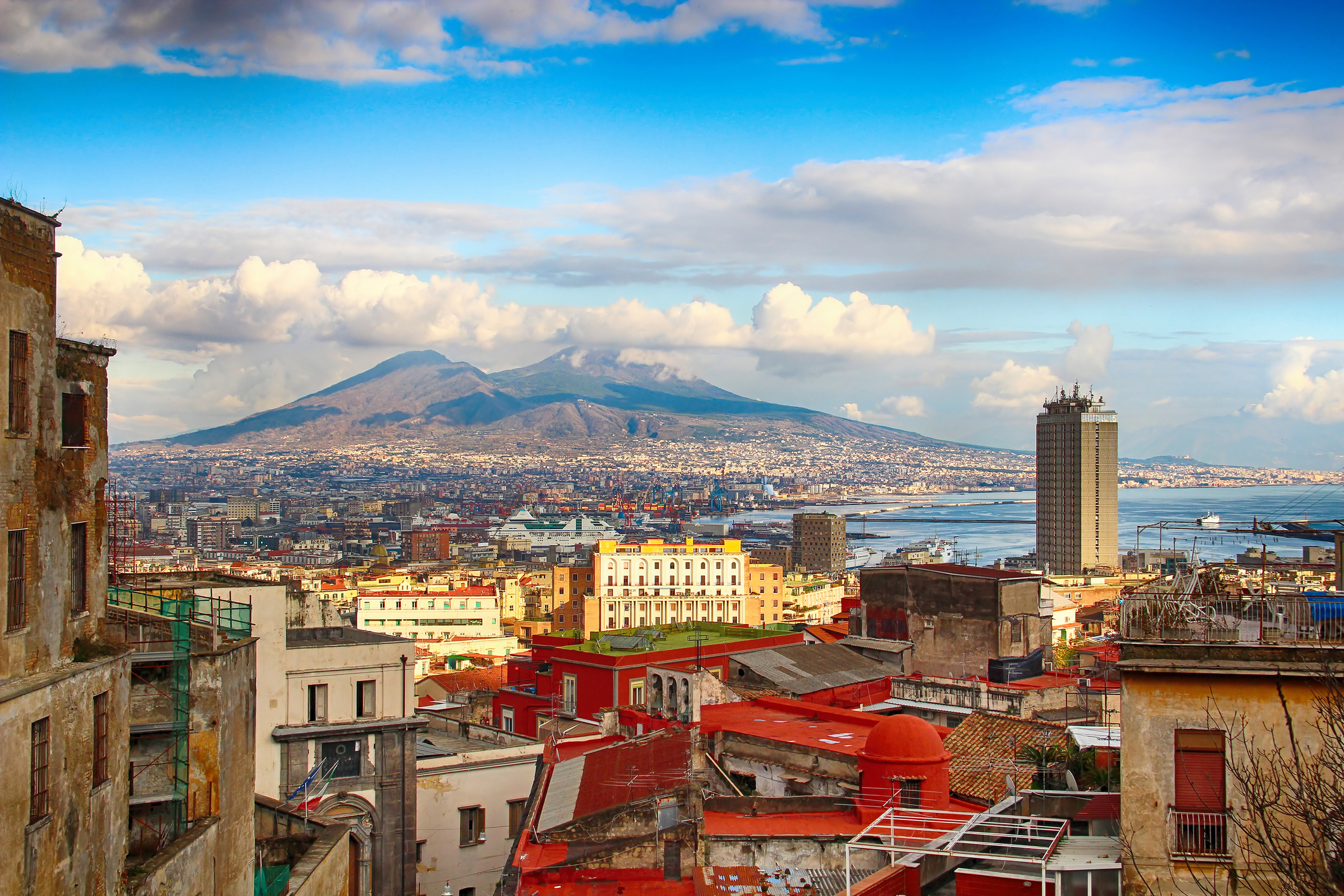Gardone, where you will find the villa of Gabriele d’Annunzio, is on the other side of Lago di Garda. To avoid congested and winding streets around the lake, we took the ferry from Torri del Benaco to get to Maderno, the town on the western bank of the lake in the province of Brescia. We started off in the car and drove to the ferry stop where we bought tickets for five people and a car and then drove right onto the boat and parked it.
Leaving the car, we climbed to the upper decks from where we were able to enjoy the passage from one side of the lake to the other. It was an extraordinary day. The sun was bright and there was a light breeze that ruffled our clothes and hair. The color of the lake that day was a beautiful marine blu and there where white waves that the wind kicked up, so the crossing was a little choppy. Garda Lake is quite large and it and takes about a half our to cross. While the others sought refuge from the wind in the cabin, Davide and I we stayed outside on the deck taking pictures and making jokes. Leaning over the railing, we laughed when the waves sprayed the parked cars below us on the first level of the ferry.
After arriving on the opposite shore, we jumped back into the car that still glistened with lake water. We then drove the short distance from Maderno to Gardone and the Villa Vittoria of Gabriele D’Annunzio – the place in which the poet lived from 1922 until his death in 1938. In his day the poet called the villa “La Prioria” (The Priory) and in addition to the house the property consists of an ampitheater, half of the full sized navel battle ship “the Puglia” that is inset into a hill in the garden a boat house with D’Annunzio’s military speedboat and a circular mausoleum where the poet is buried.
Who was Gabriele D’Annunzio to deserve this great big property? My friends informed me that he was one of Italy’s most famous poets and every child in Italy is sure to have read his literary works at some point during their compulsory eduction. D’Annunzio was a “military hero” and in the years after the First World War, he spent his days writing national propaganda. His ideas dealing with the “cult of leadership influenced Benito Mussolini and his ideas about dictatorship and fascism. D’Annunzio, as far as I can determine was a bit of an egotist and thrived on public adulation. He was a self-proclaimed genius and “Superman” and a big supporter of nationalistic pride. It was he who popularized the black shirts, the balcony speeches, and parades full of pomp and circumstance. One historian has described him as the “First Duce”. For this reason, there was a bit of competition between Mussolini and D’Annunzio and it is exactly for this reason that Mussolini continued to gift great sums of money to D’Annunzio to build his “guilded cage” and the shores of Garda, to keep him out of Rome, out of his “hair” so to speak, and out of Italian politics.
However, D’Annunzio made a several attempts (up until his death, in 1938) to intervene in politics; he wanted to convince Mussolini to not participate in the Axis agreement with Hitler. Mussolini ignored him and his advice, and it was only in 1944 that Mussolini finally admitted he had made a mistake not to follow the advice of D’Annunzio. Although he made attempts to influence Mussolini, for the most part D’Annunzio was quite content to live in isolation in his golden palace built with State money. In fact he was an eccentric man and a womanizer, who was afraid of death which consequently made him into a hypocondriac and a drug user. With State money he happily built a huge property that that served as a retreat for artistic guests, a place to entertain women and where he could wallow in his thoughts and where he could idolize his poetic muses. But if truth be told, the house and grounds, is a bit strange!
When you enter D’Annunzia’s villa – “La Prioria” you immediately notice that it is dark and somewhat oppressive in it’s interior decorating; every surface, wall, ceiling and floor is covered with tapestries and rugs. It seems that D’Annunzio lost an eye after an flying accident and because of this he was a bit sensitive to bright light. But this doesn’t seem to have stopped him from appreciating all kinds of odd things with his one good eye. Each table, desk, bookcase, ledge and shelf is overflowing and bursting with art objects, photos, paintings, books, knick-knacks and war memorabilia. It is enough to make a norma person feel claustrophobic! The gardens are lovely but equally a bit odd. There is an ampitheater built by the architect Maroni, who based it on the ampitheater in Pompeii, the monuments dedicated to war, the full sized ship mounted into the hillside of the garden and the great mausoleum in the center. For a small guy like Davide exploring the ship and running around the top of the mausoleum was more fun than touring the house, especially since there are giant dogs made of stone that guard the property from on high.































